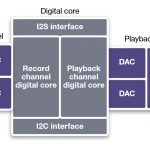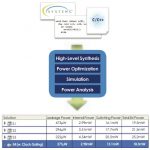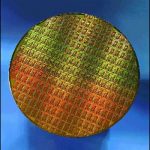Wally Rhines gave the keynote at DVCon yesterday. He started out with a game of “name that graph” which was unfortunately a bit spoiled since when the names were revealed the first line was off the top of the screen. But he extrapolated several trends such as the decreasing number of fabs (the current trend is that there… Read More
Electronic Design Automation
Shrinking audio creates issues and opportunities
There is a lot more to sound than meets the ear, and there a vast number of ways to deliver an audio experience. I recently trashed my gaming headset, replacing it with a Samson C03U mic and Audio-Technica ATH-PRO700MK2 headphones. It’s a huge upgrade, especially for podcasting, and I admit I was also motivated by research into digital… Read More
High and Low: High Level Synthesis and Low Power
It is so widely accepted that it is already a cliche to say that “power is the new timing.” With more and more chips, the major challenge is not so much to meet timing but to meet timing without blowing out the power budget. Otherwise, you could just crank up the clock rate.
I’m going to be lazy so you can insert your … Read More
Learning Properties, Assertions and Covers for Hardware Design
How do you learn new hardware design topics? I just got trained online about property-based verification for hardware designers using a free online class at Aldec. The material was created by Jerry Kaczynski, a Research Engineer at Aldec.
FinFET Design Challenges at 14nm and 10nm
At DAC 2012 we were hearing about the 20nm design ecosystem viability, however IC process technology never stands still so we have early process development going on now at the 10nm and 14nm nodes where FinFET technology is being touted. Earlier in February Vassilios Gerousis, a distinguished engineer at Cadence presented a session… Read More
At DVCon: Pre-Simulation Verification for RTL Sign-Off includes Automating Power Optimization and DFT
By now, you will have seen several postings about all the different activities that are going on at Design and Verification Conference being held Feb. 25-28 at its usual location – the DoubleTree Hotel in San Jose, CA. Besides organizing an experts panel “Where Does Design End and Verification Begin?“, Real… Read More
How Can You Work Better with Your Foundry?
The fabless revolution in the digital semiconductor industry is no more, with just a few integrated device manufacturers (IDMs) remaining on the playing field, it is now the normal way to do business. However, the learning curve for each new process node continues as it always has, with a host of new technical challenges for the … Read More
Is debugging a task, or a continuous process?
Early in my so-called EE career, I sat in a workshop led by the director of quality for the Ford truck plant in Louisville, KY, where “Quality is Job #1.” At that time, they were gaining experience in electronic control modules (ECMs) for fuel efficiency and emissions control. Who better to transfer the secrets of Crosby and Deming… Read More
Modeling TSV, IBIS-AMI and SERDES with HSPICE
The HSPICE circuit simulator has been around for decades and is widely used by IC designers worldwide, so I watched the HSPICE SIG by video today and summarize what happened. Engineers from Micron, Altera and AMD presented on how they are using HSPICE to model TSVs, IBiS-AMI models and SERDES, respectively.… Read More
Cadence ♥ ClioSoft!
Taking a look at the coveted presentation slots at the CDNLive Conference next month you will see a presentation on Data Management for Mixed-Signal Designs by one of my favorite EDA companies, ClioSoft. Great software, great support, great people, and with customers that are willing to talk publicly about their tools and technology.… Read More










Quantum Computing Technologies and Challenges